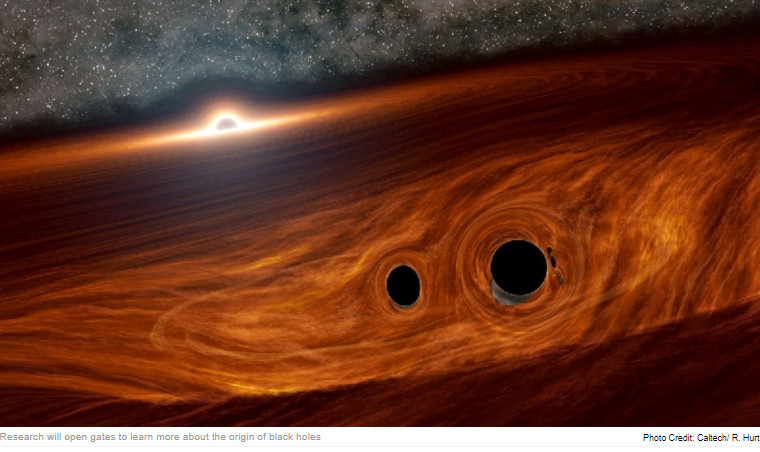
Science
Scientists see a light pulse from a black hole collision for the first time ever.

For the first time ever, a team of foreign astronomers say they may have observed light from a black hole merger. This unprecedented event was noted by scientists at Caltech's Zwicky Transient Facility (ZTF) in California after studying gravitational waves and electromagnetic radiation from the collision of two black holes.
However the work is not yet conclusive, and scientists say that they should investigate this seismic phenomenon in the next few years to come to a stronger conclusion. It is said that this work would open doors to learn more about the origin of black holes.
The findings were identified in a study led by Matthew Graham, Caltech's research professor of astronomy. The work was published in the journal, Physical Review Letters, on June 25.
According to a research carried out on 21 May last year, twin Laser Interferometer Gravitational-Wave Observatory (LIGO) installations in the US and Virgo Observatory in Italy observed gravitational waves, dubbed S190521, following a collision of two black holes in a distant region of space.
At about the same time, ZTE detected flares or electromagnetic radiation produced by a distant, supermassive black hole (or quasar) named J1249 + 3449, which suggested the direction of the gravitational wave.
But this case raises the question as to how light was created during such a collision that black holes are believed to absorb everything, including light.
Citing the analysis, the CNET article suggests that black hole mergers occur in the accretion disks surrounding the supermassive black holes. The accretion disk is a shimmering area full of gas, dust, stars, and black holes.
It is the reaction of the gas to this speeding bullet that produces a blinding light, visible to the telescopes, said Barry McKernan, who is co-author of the report.
The flare has occurred at the right timeframe and at the right place to match the gravitation wave event. We conclude in our study that the flare may be caused by the merger of a black hole, but other options can not be completely removed, added lead author Graham, quote.
